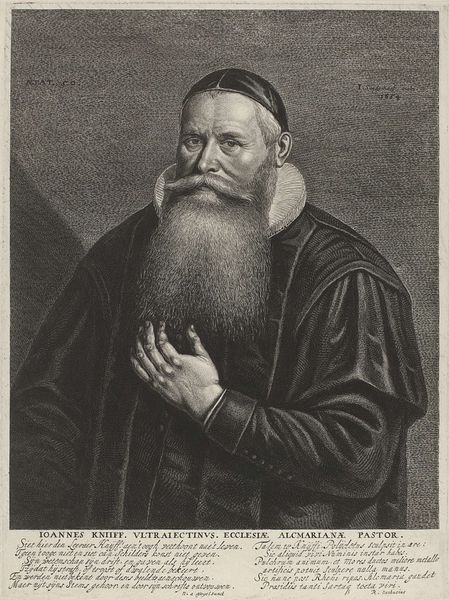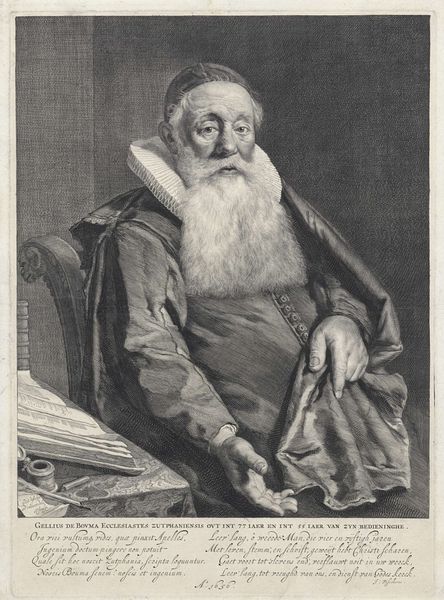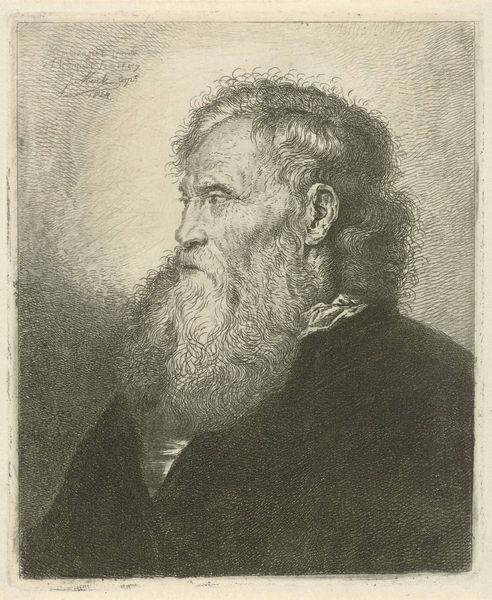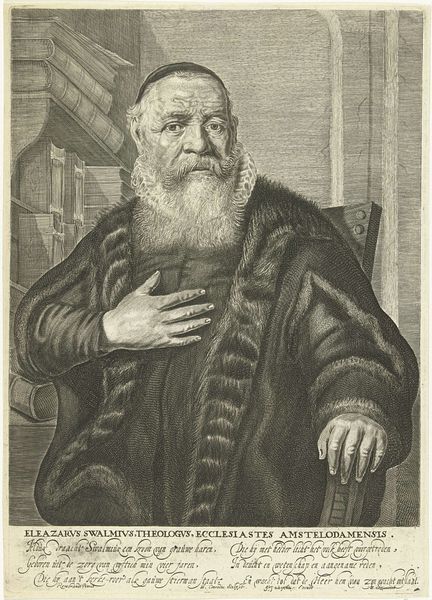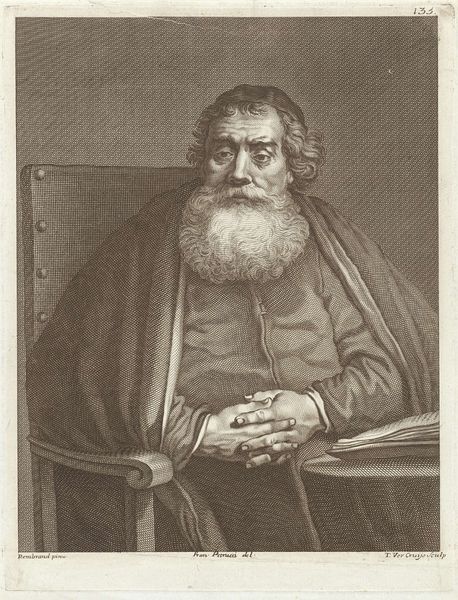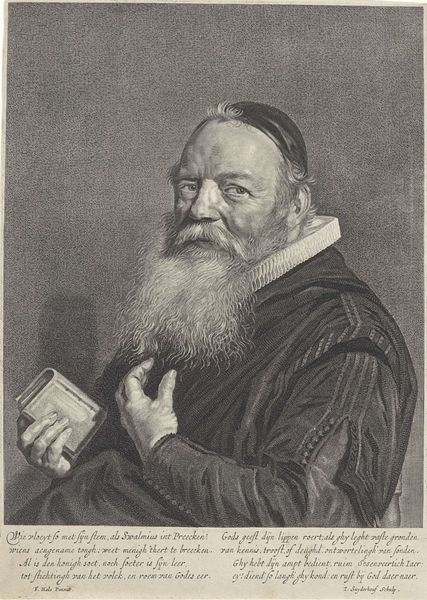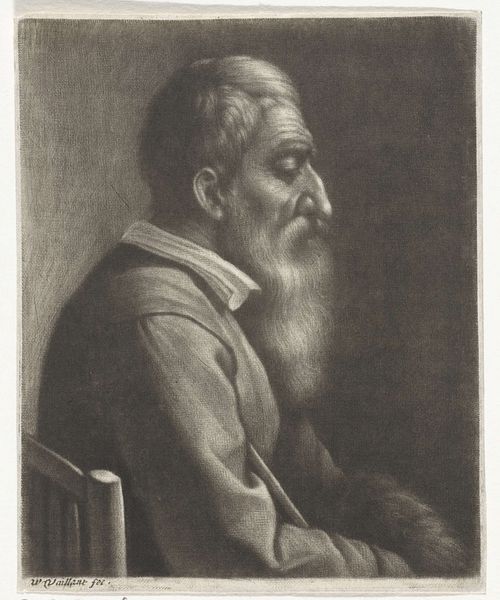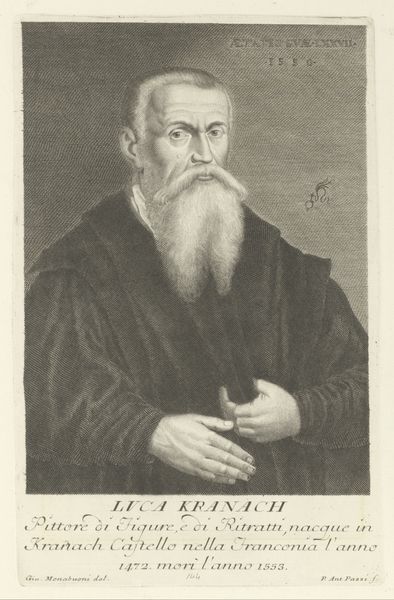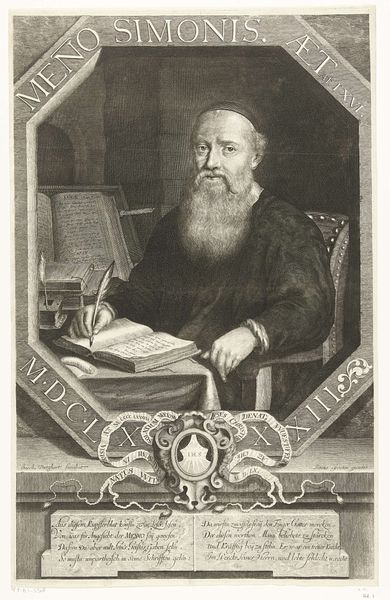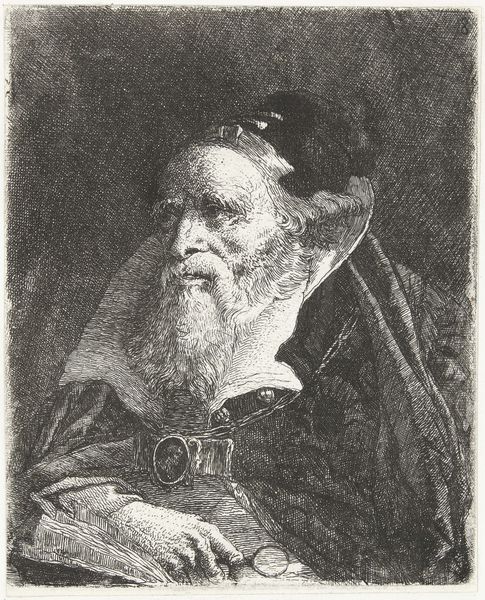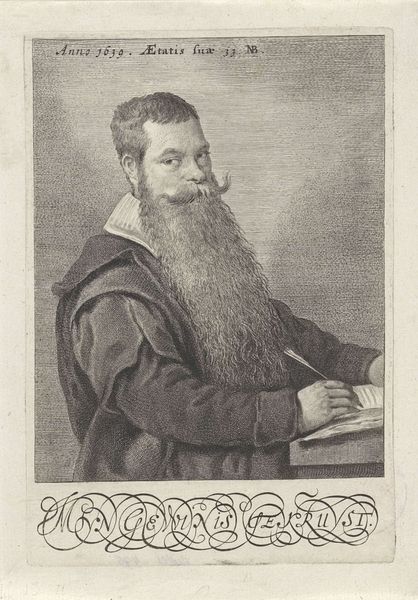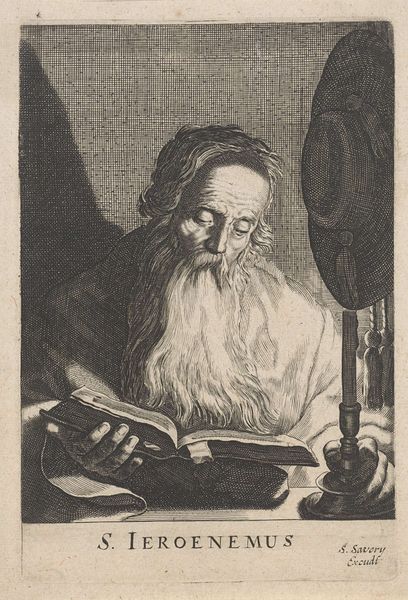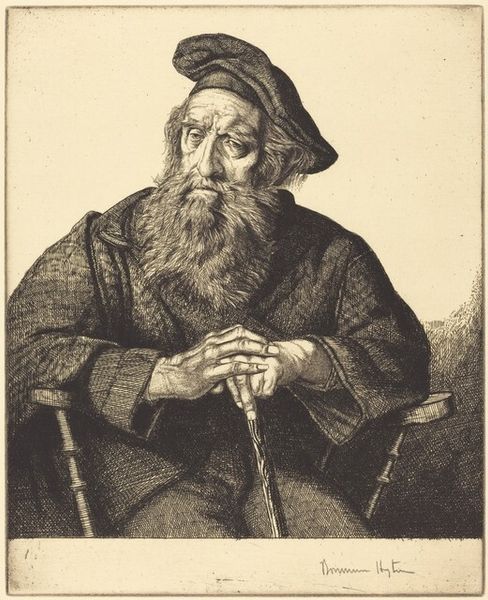
engraving
#
portrait
#
baroque
#
dutch-golden-age
#
line
#
engraving
#
realism
Dimensions: height 358 mm, width 284 mm
Copyright: Rijks Museum: Open Domain
Editor: Here we have Cornelis Visscher's "Portret van Willem de Rijck," created in 1655. It's an engraving, and the detail is astonishing. The textures created through line are very interesting! How do you approach interpreting this type of work? Curator: I focus on the relationships established by the lines themselves. Notice the contrast between the density of lines forming the beard and the relatively sparse lines of the background architecture. The artist has deliberately manipulated the negative space to enhance the tactile quality of the beard. Editor: So, it’s all about the interplay of these formal elements? Does the coat of arms have any bearing on the composition? Curator: Certainly. While iconography adds context, it is how it’s rendered that compels me. Visscher uses varied line weights around the arms. The way the heraldic shield shares a geometric language with the windows establishes pictorial unity, doesn’t it? Observe, too, the use of shadow, strategically deployed. Editor: You’re right. The lines also give form to the fall of light and shadow which provides dramatic shape to the architecture around de Rijck! What would you say is the primary function of light here? Curator: Here, light and shadow transcend mere representation, operating more structurally to emphasize the division of pictorial space. This tension elevates what might have been a perfunctory commissioned portrait into a dynamic study of form. What are your thoughts on that? Editor: It's remarkable how analyzing those lines changes how one perceives the entire piece! Thank you. Curator: Yes, understanding how formal components collaborate enriches our understanding and experience.
Comments
No comments
Be the first to comment and join the conversation on the ultimate creative platform.
